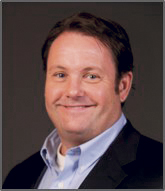SPECIALTY LINES MARKETS
FOCUS ON SOCIAL SERVICES AND NONPROFITS
Decreased donations and staffing issues continue to plague the sector
By Lori Widmer
When the world stopped due to the pandemic, there was even more need for social services and nonprofit work. Yet, not only are donations down, staffing issues continued to plague all industries, social services included, according to a Johnson & Wales University article.

Senior Vice President
RPS Signature Programs
That has prompted an interesting alliance, says Shawn McCall, senior vice president of RPS Signature Programs, who specializes in the property and casualty placement of religious and nonprofit risks for Risk Placement Services (RPS). “A lot of nonprofits are struggling to find a way to stand on their own,” he says. “So a lot of them are sharing resources and assets, from buildings to vehicles. Similar organizations are combining and working together.”
They are also engaging in crowd-funding as a way to drive donations, McCall adds. Yet, the larger issue that many cannot seem to solve, he says, is the attraction and retention of employees, particularly around COVID-related restrictions and concerns.
“Attracting and maintaining adequate and effective staff has long been a challenging task for service providers and nonprofits,” says Jason Levine, director of underwriting for the

Senior Vice President and Managing Director Risk Strategies
large accounts division of Irwin Siegel Agency, “and the pandemic has compounded this problem. As a result, we are seeing some agencies face hard facts as to whether they can continue to uphold strategic policies and procedures, including risk management-oriented processes, due to a lack of personnel (i.e., lowering their minimum driver age, etc.). Agencies should discuss any such contemplated changes with their brokers before making any final decisions.”
Shared resources or not, there’s simply too much work to go around. The workforce shortage is putting heavy pressure on the social services space as a whole, says Tony Andronaco, senior vice president and managing director for Risk Strategies. “Many social services firms already have a turnover rate of over 50%, and now cannot find qualified people to fill roles/shifts. This causes a ripple effect: Overtime expense is sharply higher; firms cannot meet state/local mandates concerning staff-to-consumer ratios; and the cost to hire, train and certify employees is increasing.”

That’s a lot of change, particularly since some agencies have yet to get back up to speed post-lockdown. “Nonprofit/social service agencies … are still adapting to changes within their organizations, which consists of remote work, lack of volunteers and employees, and creating and offering new services to provide to the community,” says Erin Peterson, practice leader for Community Care Insurance Program at Venture Insurance Programs.
One change, says Levine, is how agencies handle keeping clients and staff safe amid the pandemic. Those that provide direct services, he says, need to develop a method by which they manage their approach to vaccination requirements for staff while navi-gating the sociopolitical factors surrounding the matter, “particularly if the clients they serve have underlying health conditions that put them at higher risk.”
The coverage picture
To offset this, many firms are consolidating. “Larger social services firms are still scooping up the smaller ones and many deals are trying to get done by the end of 2021 because sellers fear a change in tax law,” says Andronaco.
These changes add more pressure to an already challenging property and casualty market. Michelle Irwin, executive director, Chubb division of Irwin Siegel, says more carriers are exiting the space. Those that remain, she says, are limiting their exposures by “lowering abuse and umbrella limits and applying liability deductibles on favorable accounts.”
Additionally, Irwin says carriers are ratcheting down on wind and hail terms and deductibles in response to decreased capacity and increasing property deductibles. “They are also applying total communicable disease exclusions on general and professional liability and umbrella, all while increasing premium,” she says. Another change: carriers unwilling to write the for-profit addiction treatment business, says Irwin.
“A lot of nonprofits are struggling to find a way to stand on their own, so a lot of them are sharing resources and assets, from buildings to vehicles.”
—Shawn McCall
Senior Vice President
RPS Signature Programs
For those carriers remaining in the space, buyers can expect to see significant premium increases—from 20% to over 50%—across all coverage lines, says Andronaco. Insurers, he adds, are reducing primary limits, pulling back on capacity overall and on excess limits (“Insurers that used to write a $10 million umbrella are now offering only $3 million to $5 million in limits”), and reducing capacity on sexual abuse and molestation (SAM) coverage (“Many insurers that used to offer full policy limits for SAM are now only offering sub-limits of $500,000 or less”).
According to Risk Placement Services’ U.S. Casualty Market Outlook: Mid-Year 2021 report, carriers are taking a harder look at renewals and asking more questions. McCall says some of the answers they’re seeking include how many volunteers they have on staff, more information on their exposures, and what they’re doing to mitigate them. “We’re seeing more carriers having more audits and less underwriting authority.”
It’s a tough spot for nonprofits, says Patti Bonnell, executive director, BHSI division of Irwin Siegel. “Contractual obligations require nonprofits to carry certain limits for their liability coverage,” she says. “Markets are starting to cap limits in the underlying and cut back on excess limits.”
In fact, changes to an insured’s business could result in nonrenewal, says Peterson. “When nonprofit agencies are creating new services for the community, some of the services may fall outside of their current insurer’s appetite. This can be frustrating for both agents and the insured.”

Chubb division of Irwin Siegel
Claims
Part of the issue, says Levine, is that states are now passing laws that lengthen the statute of limitations for civil lawsuits involving sexual abuse and molestation. “An example is the Child Victims Act in New York. This change has been a major catalyst for abuse and molestation claims, which has led to insurers scaling back on capacity in the abuse and excess markets,” he says.
That’s left many nonprofits with such exposures struggling to find their footing, says McCall. He says underwriters are asking more questions regarding exposures, the number of employees and volunteers, and what, if anything, has changed. “We’re seeing more carriers having more audits and less underwriting authority. Everyone is concerned about profitability and concerned about the ultimate exposures on the books. So were seeing a lot more questions, even for renewals that they’ve had for 20 years.”
“Larger social services firms are still scooping up the smaller ones and many deals are trying to get done by the end of 2021 because sellers fear a change in tax law.”
—Tony Andronaco
Senior Vice President and
Managing Director
Risk Strategies
That same scrutiny by underwriters could find its way into the workers compensation market, even though Andronaco says the top four causes related to workers compensation are still “consumer aggression, consumer handling (the physical moving of individuals under care), slips/falls, and automobile accidents.” Typical liability claims, Andronaco says, include: failure to supervise, elopement, drug dispensing error, and abuse and molestation.
What isn’t typical—or yet determined—is how COVID will impact workers comp claims. As Andronaco points out, the usual measurement is that the injury or illness must occur at work during the course of employment. “However, it seems that it will be near impossible to determine exactly when someone contracted COVID,” he says.
The fear in the workers comp space, Andronaco says, is that states will enact some sort of standard determination that would assume COVID was contracted while at work. That, he says, could force social services companies to pay. “This, of course, will send workers compensation premiums further north,” he adds.
“Agents can assist their insureds by making sure they have safety protocols … . Nonprofit organizations should also have an employee handbook with clear and concise information on what is expected of them and rules to follow.”
—Erin Peterson
Practice Leader, Community Care Insurance Program
Venture Insurance Programs
If all of this is not enough, there are the increased threats from cyber criminals. According to Richard Geoghan, director of Specialty Lines for Irwin Siegel, both management liability and cyber are areas in which insurers have notably reduced their appetite. “If limits over $5 million are needed, we typically have to obtain an excess policy to meet the insured’s needs.”
Blame the spike in ransomware claims, which Geoghan says have increased in frequency and severity. With so many organizations now relying on technology to operate, he says, the opportunity for cyber crime has grown.
Organizations, he says, should be revisiting their cybersecurity practices and tighten up where need be. “I would recommend having multi-factor authentication in place, utilizing a VPN when logging onto the network remotely, having the latest updates and patches installed, and having a daily backup process where the data is stored off the network.”
Yet, even with practices shored up, Levine says buyers should come to expect higher rates and more scrutiny of account submissions. “The cyber market is in the midst of a rapid and aggressive correcting phase after years of lax underwriting and low-entry premiums.” Part of the reason? Levine says that the remote work explosion increased both security concerns and ransomware attacks, “including some of the largest demands on record. Carriers are now taking exceedingly harder lines regarding adequate security software, equipment, and policies. Cyber rates have also been jumping 25% or higher on average to keep pace with the more frequent and larger losses stemming from ransomware attacks.”

Director of Specialty Lines
Irwin Siegel Agency
For agents and brokers trying to service the social services and nonprofit space, there are a lot of moving parts. Peterson suggests looking at the common claim drivers, then helping their clients address these areas. “Agents can assist their insureds by making sure they have safety protocols that include training employees on how to recognize exposures, monthly safety meetings, driver training and employee job specific training. Nonprofit organizations should also have an employee handbook with
clear and concise information on what is expected of them and rules to follow.”
“Attracting and maintaining adequate and effective staff has long been a challenging task for service providers and nonprofits, and the pandemic has compounded this problem.”
—Jason Levine
Director, Underwriting, Large Accounts Division
Advice for agents and brokers
For those clients with a sexual abuse and molestation exposure, McCall says that anything the client is doing to mitigate that exposure should be something the agent or broker notes on their submission. “With the number of submissions that are out there right now, the underwriters overwhelmed, the marketplace being challenged, more and more nonprofits are going out to the marketplace. You need to find a way to separate yourselves from that pile.” He suggests an “early, full submission” with plenty of explanation for submission anomalies.

Practice Leader, Community Care Insurance Program
Venture Insurance Programs
That requires a bit of expertise, which Peterson says agents and brokers should have. “Agents and brokers should be their insured’s experts in special markets, and a resource to ensure that there are no coverage gaps in a policy. They must reassure their insureds they are working with a specialized insurer with an excel-lent claims handling track record, which is key to writing their cover-age and keeping their business.”
Perhaps one of the more effective solutions is for agents and brokers to collaborate with carriers. “Retail agents and brokers can address claims issues by working with their underwriters,” says Bonnell. “Keeping an open dialog creates a better under-standing of the circumstances.”
For more information:
Irwin Siegel Agency
www.siegelagency.com
RPS Signature Programs
www.rpsins.com/programs/signature-programs
Risk Strategies
www.risk-strategies.com
Venture Insurance Programs
www.ventureprograms.com
The author
Lori Widmer is a Philadelphia-based writer and editor who specializes in insurance and risk management.
“A lot of nonprofits are struggling to find a way to stand on their own, so a lot of them are sharing resources and assets, from buildings to vehicles.”






